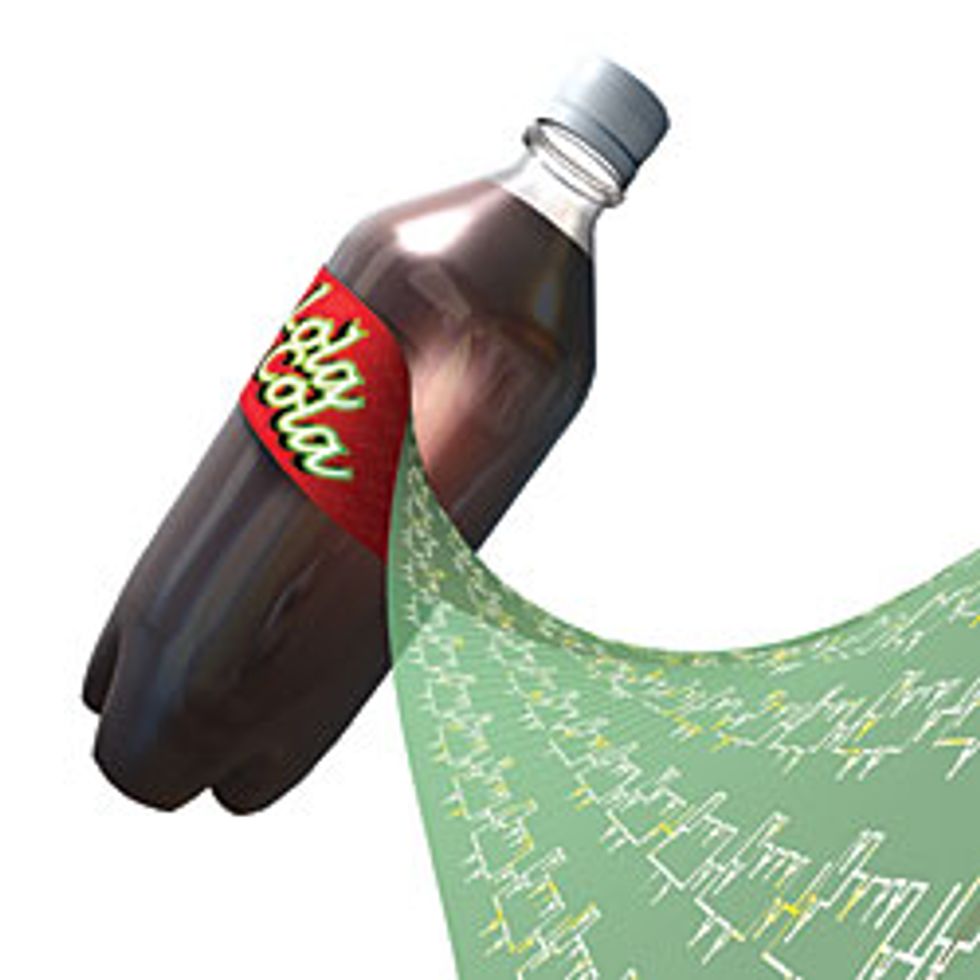Materials scientists in Britain and California have invented the first polymer semiconductor to perform almost as well, by one key measure, as the type of silicon used to drive flat-panel displays. Pioneers in plastic electronics have long suggested that displays and RFID tags could be made much more cheaply and put practically anywhere if they were made from polymer transistors that could be printed directly onto plastic and other low-cost materials.
With that purpose in mind, electronics and chemicals firms have been pushing two main classes of semiconductors: polymers and small molecules. Polymers in general have proved easy to formulate into printable inks, but transistors made from them were too slow to make many types of circuits. On the other hand, small molecules make reasonably fast transistors, but they have proved difficult to print. So research has focused on blending the properties of the two--making small molecules printable and polymers faster.
The new polymer, devised by chemists working for the Darmstadt, Germany, chemicals firm Merck KGaA and scientists at Stanford University and the Xerox Palo Alto Research Center, in California, beats previous polymers by a factor of about six in terms of a key metric called charge carrier mobility. That's the speed at which holes and electrons travel through the semiconductor, and it's a key limit to what kinds of devices can be made with a material. For example, the transistors that power the pixels of a flat-panel display must be able to switch on and off quickly enough to show moving pictures.
The amorphous silicon that drives displays today has a mobility of around 1 square centimeter per volt-second. Merck made transistors with its polymer, which carries the ungainly name thieno [3,2-b] thiophene, that topped out at 0.6 cm2/Vs. It's not clear yet if a display could be made using the material, but no other polymer has ever come this close to matching amorphous silicon.
Key to Merck's success is the fact that its polymer is also a liquid crystal. Rather than the typical tangled mess of molecules you otherwise get with polymers, Merck's material packs itself into crystals about 200 nanometers across. Charge travels quickly in crystals; the larger the crystal, the better the semiconductor. "It's fair to say that crystal domain size correlates with improved mobility," says Michael McGehee, a materials science professor at Stanford University. McGehee is coauthor with the Merck team, which is based in
Chilworth, England, of a paper describing the new polymer, which was published on the Nature Materials Web site in March.
Besides the crystals' size, their orientation with respect to each other is also important to their performance, McGehee's group recently proved. If they are misaligned, charge has a harder time hopping from crystal to crystal, he says.
Merck chemists, led by Iain McCulloch, started with a molecule based on the semiconductor polythiophene. Among the adjustments they made that helped it form large orderly crystals was to fuse rings of carbon along the length of the polymer, which prevented the molecules from twisting too much and made it easier for them to line up.
Though the liquid crystal approach has certainly improved polymer's prospects, many research groups, including one at Merck, are hard at work improving the printability of small molecules. For example, Thomas Jackson, an electronics engineering professor at Pennsylvania State University, has made transistors with a soluble version of the small molecule pentacene, with mobilities as high as 3 cm2/Vs. But it's not yet known how well that material will take to industrial-scale printing.
Will the spoils ultimately go to printable small molecules or speedier large polymers? "Who knows where they'll be in two more years?" Jackson wonders.
